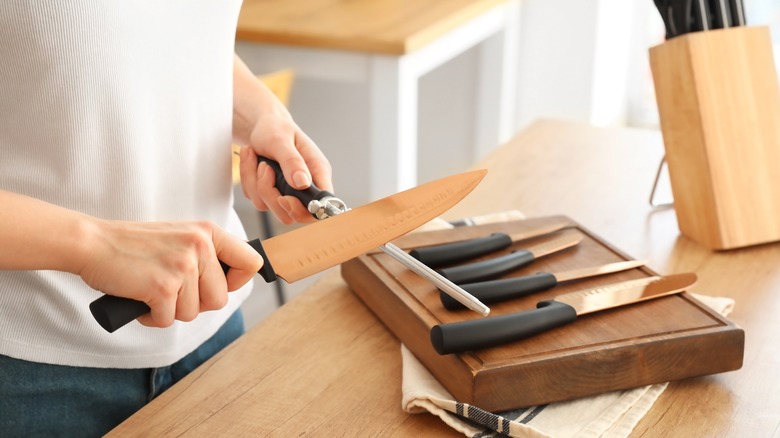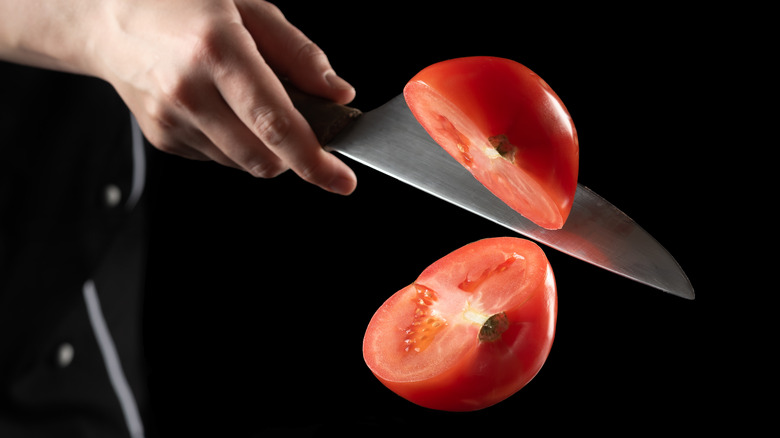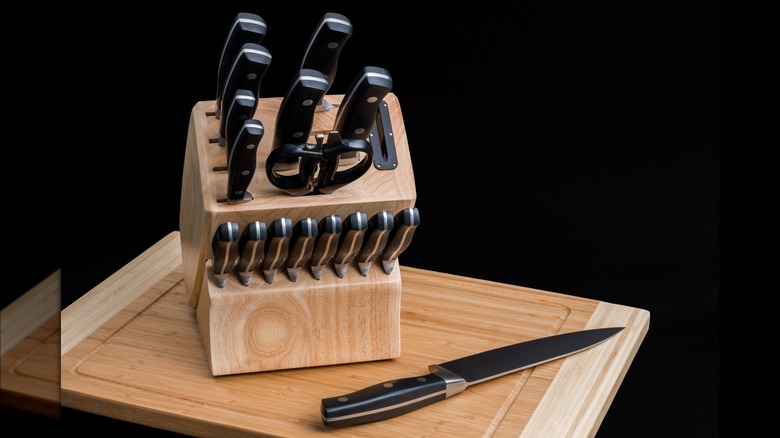How Often You Should Be Sharpening Your Knives
Be honest — when was the last time you sharpened those blades sitting in your knife block? If you can't remember, it's probably time to give them some TLC. After all, a good knife (or knife set) is the workhorse of any kitchen, from home cooking to high-end dining. While experts may offer conflicting advice on how often you should be sharpening your blade, there's a clear consensus — you should do it and not skip it. Sharp blades are not only easier to use, but they're safer and more long-lasting too.
Generally speaking, sharpening your blade every one to two months should cut it, but there's some nuance to these numbers. To keep your knives in tip-top shape, it helps to know how to recognize it's time for a tune-up, as well as how to do it properly. Luckily, maintaining your knives is straightforward with a bit of know-how.
How a sharp knife give you an edge
Knife neglect can lead to a host of problems, ranging from the frustrating — like your dull knife not cutting cleanly through meat and produce, to the dangerous — when that dull knife slips and cuts your hand. As counterintuitive as it sounds, a sharp knife is a safer, more efficient tool in the kitchen. It is worth noting that over-sharpening can be detrimental too. Since sharpening knives removes a thin layer of steel with each go, doing this too much can wear down the knife prematurely.
Chef Hervé Malivert, Director of Culinary Arts at the Institute of Culinary Education offers some balanced advice on knife-sharpening — do it whenever it's dull, but about one to two times per month for most home chefs. Japanese knife makers Santoku Knives, on the other hand, are a bit more conservative, suggesting sharpening about three times per year for most home cooks. These recommendations are made based on how long it typically takes for knife performance to decline, but this decline can happen faster with frequent use or kitchen faux pas like putting knives in the dishwasher.
Sharpening knives like a pro
When you start noticing that it's difficult to slice through an avocado with ease or cleanly cut frozen meat, it might be time to sharpen your knives. If you want a definitive test, try slicing through a tomato or piece of paper — if it doesn't go through cleanly, your knife is dull. The first step to take is honing your knife. Honing is different from sharpening, as it is done more frequently using a steel or ceramic rod to straighten the blade and remove imperfections.
When you're ready to sharpen, you have several options, including manual sharpeners, electric sharpeners, and whetstones. Manual (also known as pull-through) sharpeners are light, handheld tools that allow you to sharpen both edges of the blade in one go, but they're the least precise option. Electric sharpeners offer a level up, with more precision but a heftier price tag and countertop footprint. Whetstones are the gold standard, offering the highest level of control, but also the most patience and skill. But, if you're wary of DIY methods, professional sharpening a few times a year is an option too. Plus, this service is relatively affordable — that is, way more affordable than a new set of knives or a trip to the hospital.


